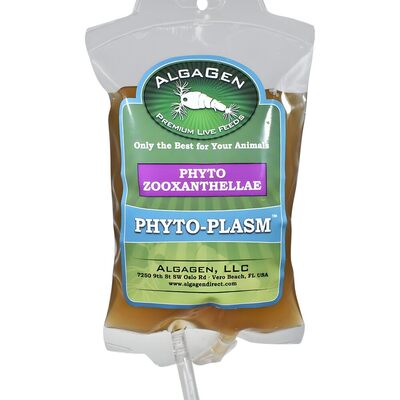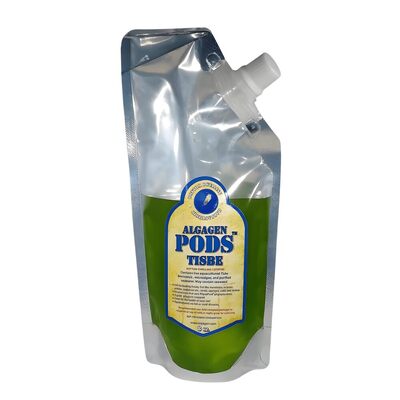Coral reefs are among Earth's most diverse and vibrant ecosystems, supporting an array of marine life. A critical element that contributes to the health and sustainability of these reefs is the symbiotic relationship between corals and microscopic algae known as coral zooxanthellae. These tiny organisms are vital to coral growth, energy production, and reef health. This article will explore what coral zooxanthellae are, their functions, and how they enhance reef ecosystems.
Understanding Coral Zooxanthellae
What Are Coral Zooxanthellae?
Coral zooxanthellae are a type of dinoflagellate algae, primarily from the genus Symbiodinium. These microscopic algae live within the tissues of coral polyps, forming a mutualistic relationship where both organisms benefit. Zooxanthellae provide essential nutrients to the corals through photosynthesis, while corals offer the algae a protected environment and access to sunlight.
The Symbiotic Relationship
The symbiotic relationship between corals and zooxanthellae is fundamental to the survival of coral reefs. Zooxanthellae reside in the coral's endodermal cells, where they perform photosynthesis, converting sunlight into energy. This energy is shared with the corals, providing them with the nutrients necessary for growth and reproduction. In return, corals deliver the zooxanthellae with carbon dioxide, nutrients from their waste products, and a safe habitat within their calcium carbonate skeletons.
Benefits of Coral Zooxanthellae for Reef Health
1. Energy Production
One of the primary benefits of coral zooxanthellae is their ability to produce energy through photosynthesis. This process converts sunlight into glucose, glycerol, and amino acids, which are vital energy sources for corals. It is estimated that up to 90% of the energy corals need comes from the photosynthetic activities of zooxanthellae. This energy is crucial for various biological processes, including growth, reproduction, and repairing damaged tissues.
2. Enhanced Growth and Calcification
Coral zooxanthellae significantly enhance the growth and calcification of coral reefs. The energy provided by zooxanthellae enables corals to produce calcium carbonate more efficiently, essential for building their skeletons. This process, known as calcification, is vital for coral reefs' structural integrity and expansion. Healthy growth and calcification contribute to the resilience of reefs against physical damage and environmental changes.
3. Nutrient Recycling
Zooxanthellae play a critical role in nutrient recycling within the reef ecosystem. They utilize the waste products produced by corals, such as carbon dioxide and ammonium, for their photosynthetic processes. This recycling of nutrients helps maintain a balanced environment, reducing the accumulation of harmful substances and supporting the overall health of the reef.
4. Stress Resistance
The presence of coral zooxanthellae enhances corals' resilience to environmental stressors. Zooxanthellae help corals withstand temperature fluctuations, light variations, and other stressors by providing consistent energy and aiding in repairing damaged tissues. Additionally, certain strains of zooxanthellae are more tolerant of thermal stress, which can help corals survive in warmer waters.
5. Coloration and Aesthetic Value
The vibrant colors of coral reefs are mainly due to the presence of zooxanthellae. These algae contain pigments that assist in photosynthesis and give corals their stunning hues. Healthy populations of zooxanthellae contribute to the aesthetic value of coral reefs, making them attractive to divers and tourists and promoting conservation efforts.
Threats to Coral Zooxanthellae
1. Coral Bleaching
Coral bleaching is one of the most significant threats to coral zooxanthellae and, consequently, to coral reefs. This phenomenon occurs when corals expel their zooxanthellae in response to stress, such as elevated water temperatures, pollution, or changes in light conditions. Without zooxanthellae, corals lose their primary energy source, turn white, and become more susceptible to disease and death. Recurrent bleaching events have devastating impacts on coral reef ecosystems globally.
2. Ocean Acidification
Ocean acidification, caused by the increased absorption of carbon dioxide from the atmosphere, poses another threat to coral zooxanthellae. Acidic waters can disrupt the symbiotic relationship between corals and zooxanthellae, impairing the algae's photosynthetic efficiency and the coral's ability to produce calcium carbonate. This can lead to weaker coral skeletons and reduced reef growth.
3. Pollution and Overfishing
Pollution, such as agricultural runoff and plastic waste, can harm coral zooxanthellae by introducing toxins and reducing water quality. Overfishing also disrupts the ecological balance of reefs, affecting species populations that contribute to nutrient cycling and reef health. Both pollution and overfishing diminish the resilience of coral reefs, making them more vulnerable to stressors.
Promoting the Health of Coral Zooxanthellae
1. Conservation Efforts
Efforts to conserve coral reefs and protect coral zooxanthellae are crucial for maintaining the health of these ecosystems. Marine protected areas (MPAs) help safeguard reef habitats from destructive human activities and provide refuges where corals and their symbiotic partners can thrive. Additionally, initiatives to reduce carbon emissions and mitigate climate change are essential for preventing widespread coral bleaching and ocean acidification.
2. Sustainable Practices
Promoting sustainable fishing practices and reducing pollution are vital for protecting coral zooxanthellae. Implementing stricter regulations on agricultural runoff, managing coastal development, and reducing plastic waste can improve water quality and create a healthier environment for coral reefs. Sustainable tourism practices, such as responsible diving and snorkeling, also help minimize human impact on these fragile ecosystems.
3. Research and Restoration
Ongoing research into coral zooxanthellae and their symbiotic relationships is essential for developing effective conservation strategies. Scientists are exploring the genetic diversity of zooxanthellae to identify strains more resilient to environmental stressors. Restoration projects, including coral gardening and reef restoration initiatives, aim to rehabilitate damaged reefs and promote the reestablishment of healthy coral-zooxanthellae partnerships.
4. Community Engagement and Education
Engaging local communities in reef conservation efforts is crucial. Many coastal communities rely on coral reefs for their livelihoods through fishing, tourism, and other activities. Empowering these communities with knowledge and tools to protect their reefs can lead to more effective and sustainable conservation practices. Programs that provide education on sustainable fishing, pollution reduction, and reef-friendly tourism can have a significant positive impact.
5. Educational Programs
Educational initiatives targeting schools and the general public help spread awareness about the importance of coral reefs and the role of coral zooxanthellae. Incorporating marine biology and conservation topics into school curricula can inspire the next generation to become advocates for the ocean. Public education campaigns, documentaries, and interactive exhibits at aquariums and science centers can also engage a broader audience.
6. Citizen Science
Citizen science projects offer a way for non-scientists to contribute to reef conservation. These projects often involve volunteers in data collection, monitoring, and restoration efforts. For example, programs where divers and snorkelers report on reef health, monitor bleaching events, or participate in coral planting can provide valuable data for researchers and foster a deeper connection to the reefs.
7. Technological Innovations
Innovations in technology are also playing a significant role in reef conservation. Remote sensing, artificial intelligence, and underwater drones are tools used to monitor reef health, track changes over time, and identify areas in need of protection or restoration. Advances in genetic research are helping scientists understand the resilience of different zooxanthellae strains and develop strategies to enhance coral resistance to environmental stressors.
8. Genetic Research and Selective Breeding
Genetic research is uncovering the diversity of zooxanthellae strains and their varying tolerance levels to stressors like heat and acidification. This knowledge is used to develop selective breeding programs that pair corals with the most resilient zooxanthellae strains. These efforts aim to create "super corals" that are better equipped to withstand the changing conditions of their environments.
9. Restoration Technologies
Techniques such as micro-fragmentation, where corals are broken into small pieces to grow and spread more rapidly, are being used to enhance coral restoration efforts. These methods can accelerate the recovery of damaged reefs and promote the reestablishment of healthy coral-zooxanthellae partnerships.
Conclusion
Coral zooxanthellae are indispensable to the health and sustainability of coral reefs. Their symbiotic relationship with corals provides essential energy, enhances growth and calcification, recycles nutrients, and increases stress resistance. However, threats such as coral bleaching, ocean acidification, pollution, and overfishing pose significant challenges to this delicate balance.
By understanding the importance of coral zooxanthellae and implementing effective conservation and sustainable practices, we can help protect and restore these vital ecosystems. The future of coral reefs will depend on our ability to safeguard the symbiotic partnerships that underpin their health and resilience. Through concerted efforts, we can ensure that these magnificent underwater landscapes continue to thrive for generations.





Recent post